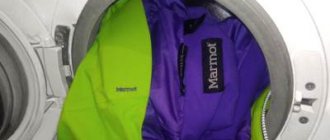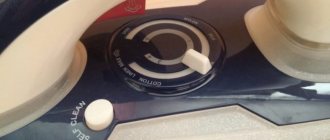Modern water heating devices make human life much easier. But in order to extend the period of perfect operation of boilers, it is necessary to regularly monitor their condition.
Maintenance procedures include cleaning the heating element from limescale. There are many means and methods for removing scale. These include folk recipes and ready-made household chemicals.
How to clean the heating element of a water heater from scale, read the article.
Why clean?
During the process of heating water, some of the salts contained in it precipitate and accumulate on the inner walls of the boiler and the water heating element.
Limescale is characterized by low thermal conductivity, so as it accumulates, the water heating time lengthens.
This fact causes significant inconvenience when using the device. But, unfortunately, this is not the only negative consequence of scale deposits.
Long-term operation of the boiler entails an increase in electricity consumption , and, consequently, money expenditure. In addition, the load on the device itself increases.
If you do not clean the heating element from salt deposits, the risk of equipment breakdown increases significantly. Clogging also affects the quality of hot water consumed. Flake-like inclusions appear in it, which are not always pleasant during hygienic procedures.
To reduce the frequency of cleaning, it is worth installing a filter on the water supply. Softened and purified water extends the life of the boiler.
Do-it-yourself cleaning of water heaters from odor inside
Many owners of water heaters notice over time that the heated water begins to smell terribly. This unbearable smell may have several reasons:
- Dirty water is supplied to the boiler. If there are a lot of foreign impurities in the water, especially hydrogen sulfide, it emits an unpleasant odor.
- There are specific bacteria and fungi in the tank. Such living creatures are born in the limescale deposits on the walls of the container. As long as there are not many microorganisms, the smell of the water does not change. But over time, their number increases, and the water begins to stink.
- Cheap or damaged water supply. Low-quality tubular plastic transfers its chemical smell to water. And old metal water pipes are ideal for the life of bacteria and fungi.
Water with hydrogen sulfide is impossible to smell
There is a way to determine which of these cases occurs:
- Run cold tap water for 5 minutes. Then place a clean bottle under the stream and close it after filling. After half an hour, you need to open the bottle and check the smell of the water. If it smells bad, there is a problem with the pipes or water.
- If cold water from a bottle smells normal, you need to look for the reason in the boiler itself. To do this, you again need to fill the plastic container, but only from the hot tap closest to the water heater. We wait 30 minutes and smell. If you can’t breathe from the bottle, it means there are harmful microorganisms in the tank.
In order to eliminate the unpleasant odor due to bad water or rusty pipes, you can do the following:
- Install a filter that removes bad-smelling gases from the water.
- Complain to the SES about the poor quality of tap water.
In the first case, you don’t have to wait for someone to come and fix the problem. Therefore, if you can’t stand the smelly water, it’s easier and faster to install a filter.
Problems with microorganisms in the boiler are solved differently:
- Sterilization of the tank. The water in the boiler is brought to a boil and remains in this state for a long time.
- Removing scale from a water heater (see above). This will destroy the favorable environment for the proliferation of microbes and bacteria.
To prevent smelly water from coming out of the boiler again, you need to follow simple preventive measures:
- Do not leave water in the water heater when it is not in use for a long time.
- Periodically descale the tank.
- It is advisable to install a filter.
- Pay attention to water quality. If necessary, contact the sanitary and epidemiological station.
How often?
Experts recommend carrying out preventive cleaning of the heating element once a year . If the device operates under increased load, it is advisable to increase the frequency to twice a year.
In this case, it is always necessary to monitor the operation of the water heater. There are several signs that indicate the need for cleansing.
The time for cleaning has come if:
- water takes longer to heat up than usual;
- power consumption has increased;
- the device makes noise during operation;
- the case and sockets become very hot;
- the water has acquired a yellowish tint;
- a hydrogen sulfide smell appeared in the water;
- the boiler turns on and off.
If a white coating remains on the taps, it means that the water hardness is increased. In this case, the water heater requires more careful maintenance.
Reviews
Storage water heater
It is recommended to choose cleaning services for heating structures and household chemicals for their cleaning based on reviews on the Internet, since otherwise there is a risk of encountering unfriendly services that can damage the mechanism, or it will be impossible to cope with the chosen product.
Dmitry Yur, St. Petersburg: “My boiler was always washed by a specialist. He did it quickly and always replaced the heating element if necessary. Usually this was required 1-2 times a year. I managed it quickly: poured in the acid, waited, drained it, washed it. I decided to try it myself, it turned out that even I could cope. Everything there is on flexible lines, so you can easily clean it with acid.”
Galina Dyatlova, Syzran: “When installing the boiler, the craftsmen advised installing filters so that less scale would settle on the walls of the water heater. I listened to them, ended up changing several cartridges over the course of a year, and a bucketful of scale still pours out of the boiler when I wash it. I solve the problem using Alpha Phos. It turns out to quickly get rid of unpleasant odors and dirt. The boiler is already several years old, I have never changed the heating element or anode during this time.”
Ilya Smirnov, Volgograd: “I watched a lot of videos on this topic. Everyone complained that it was difficult to remove both the boiler itself and the heating element. I don’t have any extra screws on the heating element, it’s easy to remove, even my grandmother could figure it out. When I purchased this particular water heater, I was advised so that I could then clean it of scale with my own hands. I didn’t bother buying professional products: regular vinegar and citric acid do a great job with this. Over the years of use, there have never been any leaks, no unpleasant odors, or overheating of the boiler itself.”
When questions arise about why the boiler takes longer to heat water, why there is an odor coming from it, and why energy bills have increased, it is worth paying attention to its insides. Most likely, they are covered with a thick layer of scale and rust, which no one has removed for a long time. Neither product has a cumulative effect, so regular cleaning is required to maintain the functionality of the water heater.
How to disassemble a boiler?
Before proceeding directly to the cleaning procedure, the device must be disassembled and the water heating element removed from it.
Disassembly work is carried out following a certain algorithm:
- The device is disconnected from the power supply.
- The pipe through which water is supplied is blocked.
- Close the cold flow valve near the boiler.
- Open the hot water tap on the nearby mixer.
- A hose is connected to the drain fitting and the water is released.
- Remove the water heater from the wall and turn it over.
- Unscrew the mounting bolts from the tank pan.
- Remove the panel and take out the thermostat holder.
- Unscrew the screws on the protective door and remove it.
- Disconnect the contacts, freeing the wires.
- Remove the rubber seal.
- Take out the heating element.
To facilitate subsequent assembly of the unit after cleaning, it is recommended to take step-by-step photographs of disassembly.
Methods for removing scale and rust
Owners of small boilers with a volume of 10 to 50 liters can remove the device from the wall. This will make it easier to disassemble it and carry out further measures to clean the container from scale and rust.
Before removing the boiler, it is necessary to disconnect it from the network, close the shut-off valves and drain the water from the water hydrator.
For owners of large-volume devices, from 80 to 200 liters, this will be very problematic. Therefore, it is better to clean such boilers without dismantling them.
The cleaning technology is the same for instantaneous water heaters of any size . Preventive maintenance can be carried out in two ways:
- mechanical;
- chemical
There are many known disadvantages and advantages of each of these methods.
During the mechanical cleaning process, disassembly of the device is necessary, which is associated with the risk of damage to the heating and control elements. The chemical method is simpler in nature, but less effective and, moreover, its results can only be judged by indirect evidence. Carrying out a combined chemical cleaning followed by mechanical removal of dirt from the boiler gives the best results.
Mechanical
To carry out this work, you need to disassemble the device to gain access to the internal tank. To do this you will need the following tool:
- plumbing wrench (pipe);
- adjustable wrench;
- set of open-end wrenches;
- screwdrivers of different types and sizes.
Before you begin disassembling the device, you must turn off the cold water supply and open the hot water tap. After all the water has drained out, you can begin the process of dismantling the water heater elements.
All work related to cleaning the boiler, its removal and disassembly must be carried out by first de-energizing the device (completely disconnecting the power plug).
The most difficult option is possible, in which the hot water outlet hole is so clogged that it is not possible to drain the liquid. In this situation, please have a lot of patience and a couple of basins, one of which must be installed under the bottom of the boiler, and the second kept at the ready.
Disassembling the boiler for mechanical cleaning
The device must be disassembled in the following order:
- remove the protective panel and thermostat knob;
- remove the screws to access the electrical panel;
- disconnect the boiler power cable and remove the connection terminals from the heating element and thermostat;
- carefully begin to unscrew the flange with the thermostat and heating element. When water stops flowing out, remove the flange completely.
In order not to get confused in the electrical circuit of the device, photograph the internal connections using any camera.
Next, you need to use a knife, chisel or other sharp object to clean the surface of the heating element from scale. At the same time, try to carry out the work carefully so as not to damage the heating element tube.
How to get the heating element?
The process of removing the heating element must be very careful. This rule is especially important to follow if cleaning has not been carried out for a long time.
Significant accumulated deposits may not allow you to quickly remove the element , and sudden movements can cause damage.
Having taken out the heating block, it is also necessary to inspect the magnesium anode. If the degree of its depletion is close to the maximum, then it is advisable to immediately replace this element with a new one. Otherwise, after some time you will have to repeat the disassembly of the unit.
Before You Begin: Basic Rules
No matter how clean the water is, it will in any case begin to form scale. Over time, organic deposits and sludge (fine sediment) will still accumulate inside the container.
There are several signs by which you can determine that your water heater needs to be cleaned:
- A noticeable increase in heating time.
- Frequent operation of the thermal protection circuit breaker.
- Sharp pops and noise inside the tank.
- Hot water has an unnatural color and smells unpleasant.
The water in our taps contains a large number of various impurities, lime, manganese and other various chemical elements that make it hard.
Typically the focus is on the heating element. Water containers rarely require special additional care. The result of hard water is the formation of various growths inside the tank.
The result of hard water is the formation of various growths inside the tank.
How to remove lime deposits?
The removed heating element is cleaned in two ways: mechanical and chemical . If the lime deposits are thick, then both methods are used together.
First, large deposits are removed from the tubular part using physical force, and then the remaining limescale marks are removed chemically.
To do this, fill a cylindrical container (for example, an enamel bucket) with cleaning liquid and lower the heating element into it. The exposure time depends on the nature of the reagent.
The boiler tank itself also needs to be cleaned after removing the heating element. The procedure is carried out using a hose - it is inserted into the tank. Turn on the water under pressure and wash away the dirt.
How to remove using folk remedies?
To dissolve the solid salt deposit on the heating element, it is necessary to use substances with an acidic reaction. Used as home cleaners:
Lemon acid . Pour two 25 gram packets of powder into a liter of water. When all the crystals have dissolved, a heating element is lowered into the solution. Leave for a day, after which the heating element is washed in clean water.- Acetic acid .
If a vinegar solution of medium concentration (9%) is used for cleaning, then take 5 tablespoons per liter of water. If only essence is available, then its quantity should be 2 tablespoons for the same volume of water. The holding time is 10-12 hours. - Mechanical cleaning . To remove limestone, use a metal brush, scraper, or sandpaper. The method is labor-intensive and cannot be used to clean the anode.
If there is too much scale, then the amount of reagent can be increased, and the metal container with the solution and heating element can be placed on low heat and heated for 30-60 minutes.
How to remove plaque with household chemicals?
Ready-made liquids sold in household chemical stores are distinguished by a special composition that guarantees the effectiveness of cleansing. Various companies produce such products:
- Boiler-Cleaner . Acid remedy. The liquid is used against carbonate salts and iron oxide. The composition includes a complex of acids, an anti-corrosion additive and substances that enhance the effect of the main reagents. To clean a contaminated surface, the liquid is mixed with water to obtain a concentration of 5 to 12%. The heating element is lowered into the solution and kept for 8 hours. The cost of a 5-liter canister is on average 480 rubles.
- SteelTEX . The formula of the product includes surfactants and corrosion inhibitor additives. The liquid helps remove metal oxides, salts, rust, and biological inclusions from the heating element. According to the instructions for use, SteelTEX is diluted with water in a ratio of 1:6 to 1:10. The stronger the contamination, the stronger the solution should be. After washing, use an alkaline neutralizer. The price of the product (20 kg) is about 4,200 rubles.
- Cillit ZN/I . This reagent from a German manufacturer is designed to combat rust and lime salts. To treat heating elements, prepare a solution of 1 part of the product and 9 parts of water. The part is kept in the solution for 1-4 hours at a temperature of 20 to 40 degrees. If necessary, heating is allowed. The average cost of a 20 kg canister is 10,700 rubles.
Is it possible to clean it at home?
The process of removing scale from the surface of a boiler is not elementary. In this case, skills, tools and great desire are required. If in doubt, contact a specialist. In our article we will look at how to clean a water heater yourself. Despite the fact that models from different brands of water heaters have their own design features, for all devices, cleaning the boiler with your own hands follows the same algorithm.
For work, prepare:
- screwdriver with wrench;
- screwdriver;
- sandpaper;
- gloves;
- cleaning agent.
Choosing a cleaner to remove deposits
Cleaning the water heater will be more effective and without significant time expenditure if you use a special product to restore the surface of the water heater from scale. To do this, visit a household chemicals store and purchase any boiler cleaner.
A concentrated solution of citric acid has a good cleaning effect. To prepare it, take 0.5 kg of the substance and dilute it in 2 liters of water.
Warning! In the instructions for the equipment, look at the contraindications to the use of certain components of the cleaner. Most reagents are not suitable for cleaning rubber sealing parts.
Alumtex
Russian manufacturers also know how to flush a water heater. They released Alumtex. The yellow liquid must be diluted with water in a ratio of 1:10 to thoroughly clean the inner surface of the boiler and heating element from rust, scale, limescale and other harmful deposits. Increases efficiency and overall performance of boilers, prevents premature wear.
SteelTEX
Reagent for neutralizing acidity
Chemical reagents of this brand have earned the love of consumers. The product line consists of flushing solutions for heat exchange equipment, neutralization fluids and accessories. Depending on the material that requires cleaning, you should choose a specific line:
- IRON;
- COOPER.
However, there is also a universal ZINC powder suitable for removing various types of contaminants from most work surfaces. You will also have to purchase neutralizers that will stop the effects of the reagents. When working with acids and alkalis, it is necessary to use acid-resistant gloves and safety glasses, which are also produced by this brand. A set of pH test strips will help determine whether the solution has completely washed off the walls of the boiler or not.
Cillit ZN/I
The reagent is used to remove rust and limestone from boilers, boilers, pipelines and steam generators. Silit is produced in Germany.
How to assemble the tank?
Reassemble the device in the reverse order. To do this, it is important to remember the sequence in which the actions were performed during dismantling. The clean heating element and flange are returned to their place, rubber gaskets are laid, contacts are restored and the protective door is screwed on.
After assembly, you need to fill the tank with water and check the tightness of the device. If water is not leaking anywhere, connect the thermostat, connect the panel and screw in the lid. After this, the water heater is connected to the electrical network.
Cleaning indiscriminately
The method is suitable if the contamination is not too significant. To update the inside of the boiler and remove scale, you will need:
- fill the tank only 1/3, heat the water in it to 95 degrees;
- open the drain fitting and connect the hose through which the cleaning solution will be supplied to the container;
- the hose must be secured at any point above the tank and left in this position for several hours;
- drain the working solution and rinse the tank with clean water.
To completely remove the remaining solution, you will need 4-5 volumes of the tank, after which the water heater can be used as usual. The water for washing should be warm - about 25-35 degrees. It is unacceptable to use water from a boiler that has not been washed after using a chemical solution for any purpose.
Features for devices from different manufacturers
The general scheme for removing the water heating element may have slight adjustments depending on the brand of the boiler. They are determined by the individual structure of the device and the method of installing the heating element. The following boilers have disassembly features:
- Ariston. To remove the cover with the heating element, you must first insert it inside the housing. If the part does not give in, rock it slightly and try again. The heating element is taken out sideways, as it has a curved shape. On some models, this part needs to be turned counterclockwise.
Gorenja. To remove the front panel on the tank, you need to lightly press its lower edge and pull it towards you.
Once the latches have engaged, the panel is removed. The boilers of this company are heavy, so it is better to lift and turn the device together.- Polaris. Models of this brand are distinguished by the difficulty of removing the heating part. First, the retaining bracket in the device is unscrewed and only after that the heating element is removed. It is taken out at an angle, as if taking it to the side.
- Atlantic and Termex . In water heaters of these brands, first unscrew the nuts located around the circumference of the tank. Then remove the fastening washer. The flange on which the heating element is fixed is lowered down. The heating element is taken out carefully, using loosening movements.
Useful tips for cleaning your water heater
Before you rush into battle, trying to remove all the scale that you find inside the device, we recommend that you listen to our advice.
- Do not start cleaning the boiler alone! Even the most compact storage water heater still weighs a fair amount. Therefore, it is better to ask a friend to help you - this will help avoid both possible injuries and damage to the device. Remember that storage models may fail if dropped.
- Turn the appliance on and off from the mains only if there is water in it! Please remember that turning on the unit empty may result in a fire.
- If you have successfully completed all the cleaning and replacement of components, then fill the device with water and wait 2-3 hours! It happens that the flange of the water heater may leak. If you did everything correctly, there are no leaks, then you can breathe out and use it without fear.
- Wear personal protective equipment if you use a chemical cleaning method. Believe me, acid fumes are unlikely to be beneficial to your health.
Pemolux
Pemolux and other powdered descaling agents, such as DALLI or COMET, are perfect for automatic machines. This is a safe household chemical, but you should still use it with rubber gloves.
How to descale your washing machine:
- After the next washing process, take one of the suggested products and an old toothbrush, but with soft bristles.
- Use a brush to scrape off any deposits from the entire surface of the drum.
- Then apply the cleaner to it and go over the walls. Try not to miss a single place and get into all the cracks.
- The procedure must be repeated until all limescale has been removed.
Then remove the loose deposits with a damp cloth and set the machine to wash on idle.
After this, wipe the drum dry.
Why does plaque form on the heating element?
Limestone deposits on heating elements are deposits that harden into a crust and cover the heating surfaces of heat exchange devices. At high temperatures, the salts contained in the water decompose into carbon dioxide and insoluble sediment that accumulates on the walls.
From a soft coating, it quickly transforms into a hard crust. Calcium compounds predominate, which is why the deposits are called limestone. Deposits form in water heaters faster or slower, but always, since every type of water contains salts.
Scale has different colors and structures, but the level of thermal insulation and hardness is approximately equal. The harder the water, the more salts, the faster and more intense plaque forms. Rust that appears as a result of corrosion of water heater parts and comes with water can also accumulate, mix with other deposits and harden.
- Carbonate: CaCO₃, MgCO₃ – calcium, magnesium;
- Sulfate: CaSO₄;
- Silicate: silicic acid chemical compounds Ca, Mg, Fe, Al.
- primary – looser, accumulated during the crystallization of salts;
- moving sludge, suspension, corrosion products;
- secondary – hard layer. Sludge, sediment due to high temperatures (typically) sticks to surfaces and transforms into stone.
What determines the intensity of plaque formation:
- high temperatures;
- water hardness level.
In the water heater tank, the aggressive environment is constant - there is always a large volume of water, thermal processes, so lime crust and sludge form quickly. The heating element is a heat source, for the device the situation is aggravated. The anode only protects against oxidation, does not prevent scale in any way, it can only make it a little softer.
The obligation to remove limescale is due to the following:
- extremely low heat conductivity (steel 39 kcal/m*hour*degree, scale 0.1 kcal/m*hour*degree), which is fraught with the following: overheating shortens the service life and threatens burnout (1 mm crust = 75% additional thermal insulation);
- High temperatures damage electrical parts, the temperature sensor, and contacts can burn out;
Efficiency decreases significantly - more energy is spent to heat water (by 15 - 20%) than usual.
Signs that cleaning is required:
- noise, whistle;
- slow heating, temperature does not match the set values;
- increased energy costs;
- yellowish tint of water, solid particles;
- rotten smell, airing (the mixer spits - accumulated hydrogen sulfide comes out);
- the walls near the heating element are overheated;
- the water heater turns on and off - protection against overheating, caused by deposits, is triggered.
Is there any benefit to softening chemicals?
We've all seen the Calgon commercials that show a very dirty heating element and heating element after using the product. The second one just shines and looks brand new. It is clear that not everything is so wonderful, and the second ten is actually new, but does Calgon help even a little? The sad answer is no or very little. If you have very hard water, it will reduce the rate of scale formation by 10 percent, no more. At the same time, it costs tens of times more than vinegar or citric acid, which are easy to buy and use at home.











